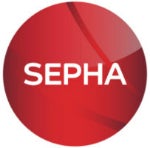The current industry standard of blue-dye testing the seal integrity of blister packs is not as accurate as modern Blisterscan technology available from Sepha, according to a new whitepaper published today by leading packaging expert, Dr Dorian Dixon, of the University of Ulster. In some cases, the difference in accuracy between the two methods in finding a defective blister pack could be as much as 10%. In a global market valued at over $40 billion, a 10% difference in a product being sealed correctly can have a major impact on quality control and hence cost reduction.
In his whitepaper, which is available to download free at Sepha’s website, Dr Dixon compares the ability of Blisterscan and the blue dye test to detect defective pockets in blister packs. The most widely used industry method for testing blister pack integrity is blue dye testing, while the Sepha Blisterscan is a dry, non-destructive technique which uses a laser to measure changes in the pack profile which result from applying a vacuum.
A preliminary study was conducted by Dr Dixon to determine the ability of Blisterscan to identify defects in a wide range of blister pack designs. A design of experiment approach was used to investigate the effect of pocket dimensions, foil thickness, pack material, and defect size on detection rates by both Blisterscan and blue dye testing. This study found that the Blisterscan test method found 100% of 15µm sized holes while only 85% of such defects were picked up by blue dye testing. In his whitepaper study Dr Dixon went on to compare the ability of Blisterscan and the blue dye test to detect defective pockets in blister packs with 12µm or 20µm sized holes laser drilled in the packs to create defective packs. The defects were laser drilled in the approximate centre of the foil laminate covering each pocket and the dimensions of the holes were confirmed to a tolerance of +/-2µm using an electron microscope.
Commenting on the results of the whitepaper Dr Dixon said, “Blisterscan testing is a rapid non-destructive test method which can detect the presence of 12µm, 15µm and 20µm sized defects in pharmaceutical blister packaging with a higher degree of reliability than conventional blue dye testing. The non-subjective nature of Blisterscan testing removes the possibility of human error and reliance on operator judgement, which is a key element in the correct identification of small holes using traditional blue dye testing.”
Dr Dixon also went on to question the ability of current blue dye test methods to offer a repeatable, objective series of test results: “This technique relies on human subjectivity; it is unlikely that the accuracy achieved in these laboratory tests could be reproduced during routine factory quality control procedures.”
Sepha’s chief executive, John Harran, commented on the significance of the whitepaper results: “In a global pharmaceutical manufacturing environment where quality control and cost reduction are key elements, the results of this study pose questions over the ability of current blister pack integrity test procedures to deliver consistent and accurate levels of quality control. Dr Dixon’s conclusion would suggest that the industry should consider the more modern, appropriate, and accurate test verification methods that are available to them.”
Sepha has been at the forefront of innovation into pharmaceutical packaging machinery since pioneering deblistering for the pharmaceutical industry in 1980. The company now has an international agent network and does business across seven continents with some of the world’s leading pharmaceutical manufacturers. For further information visit Sepha’s website.

